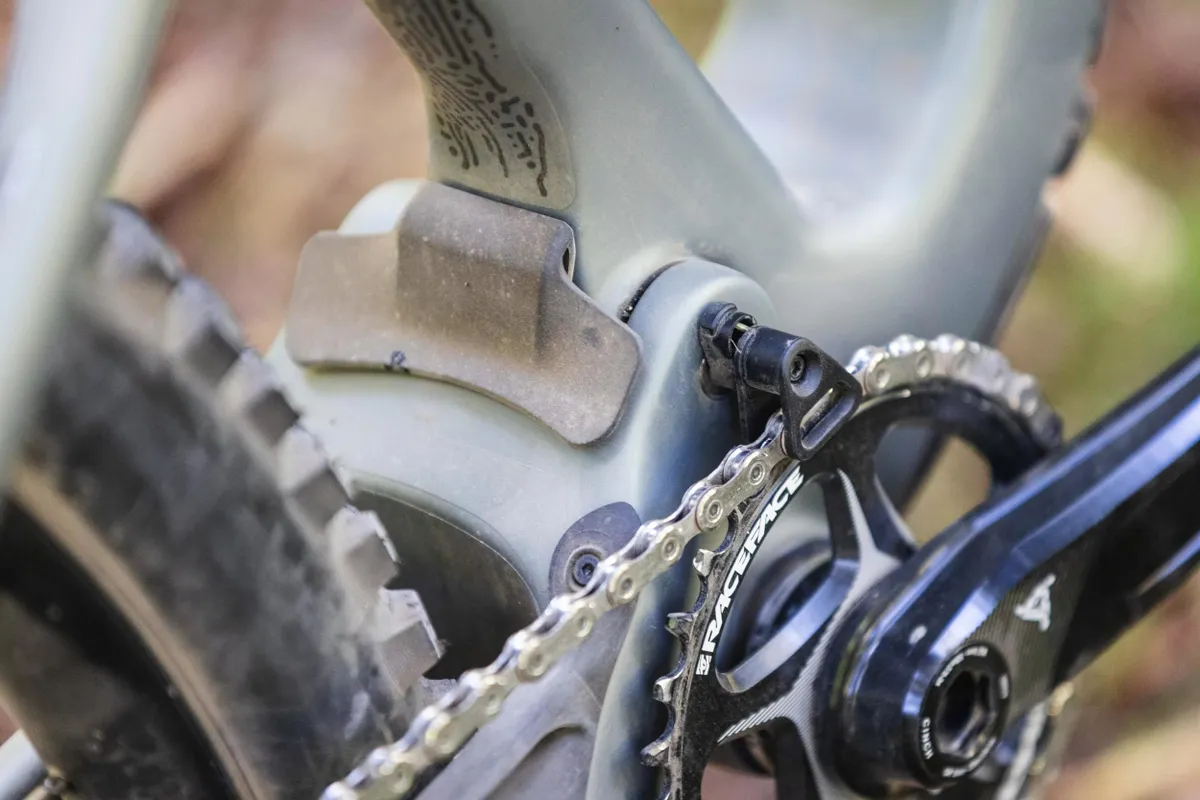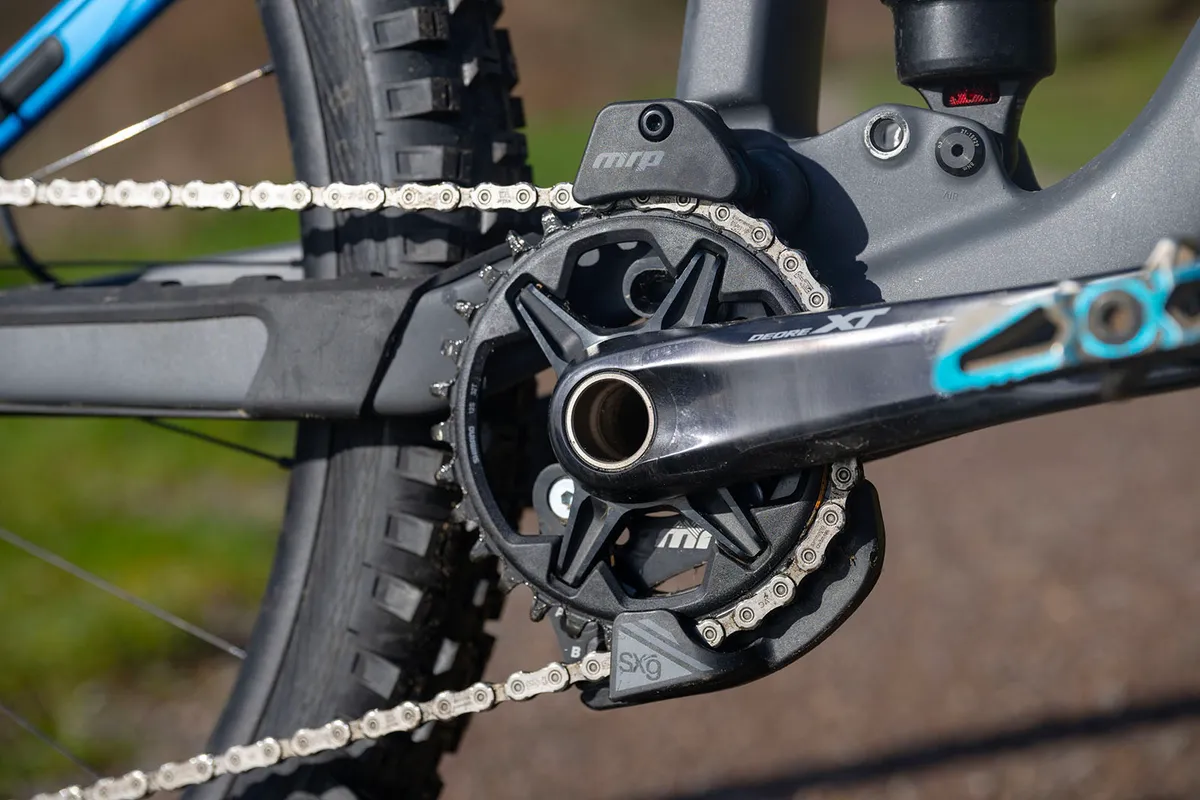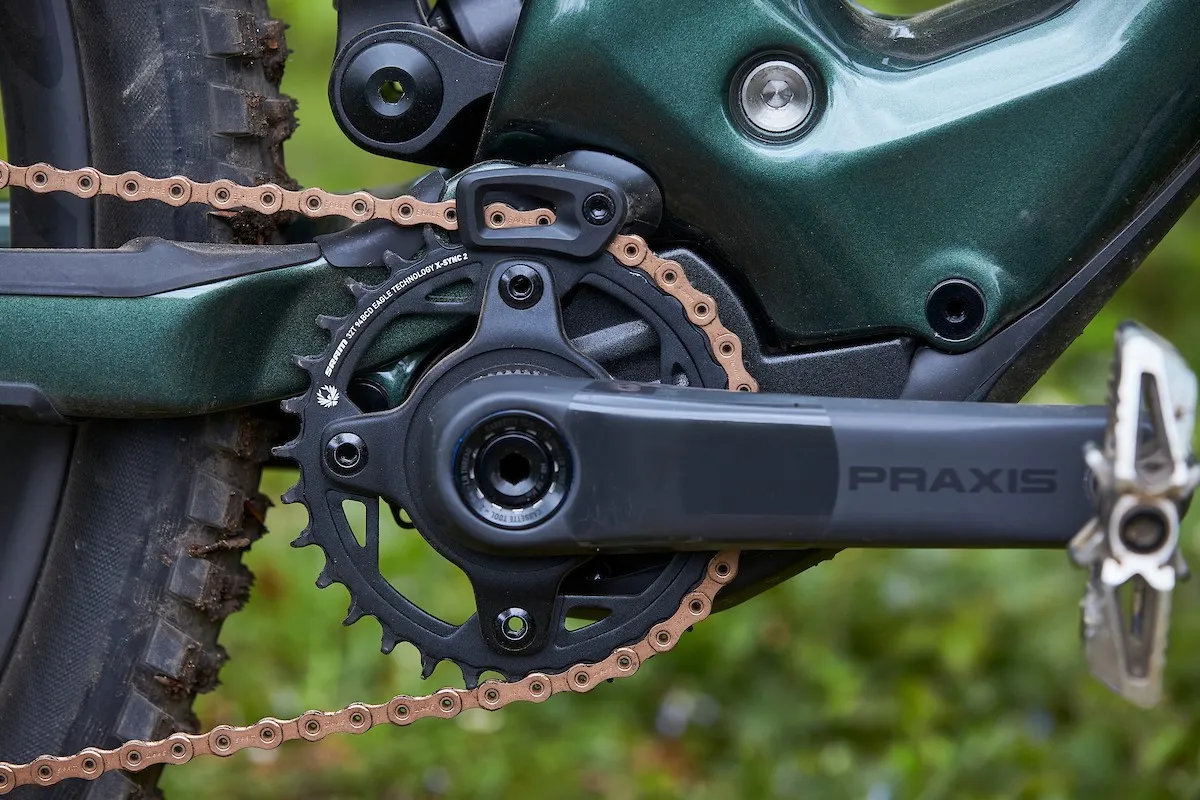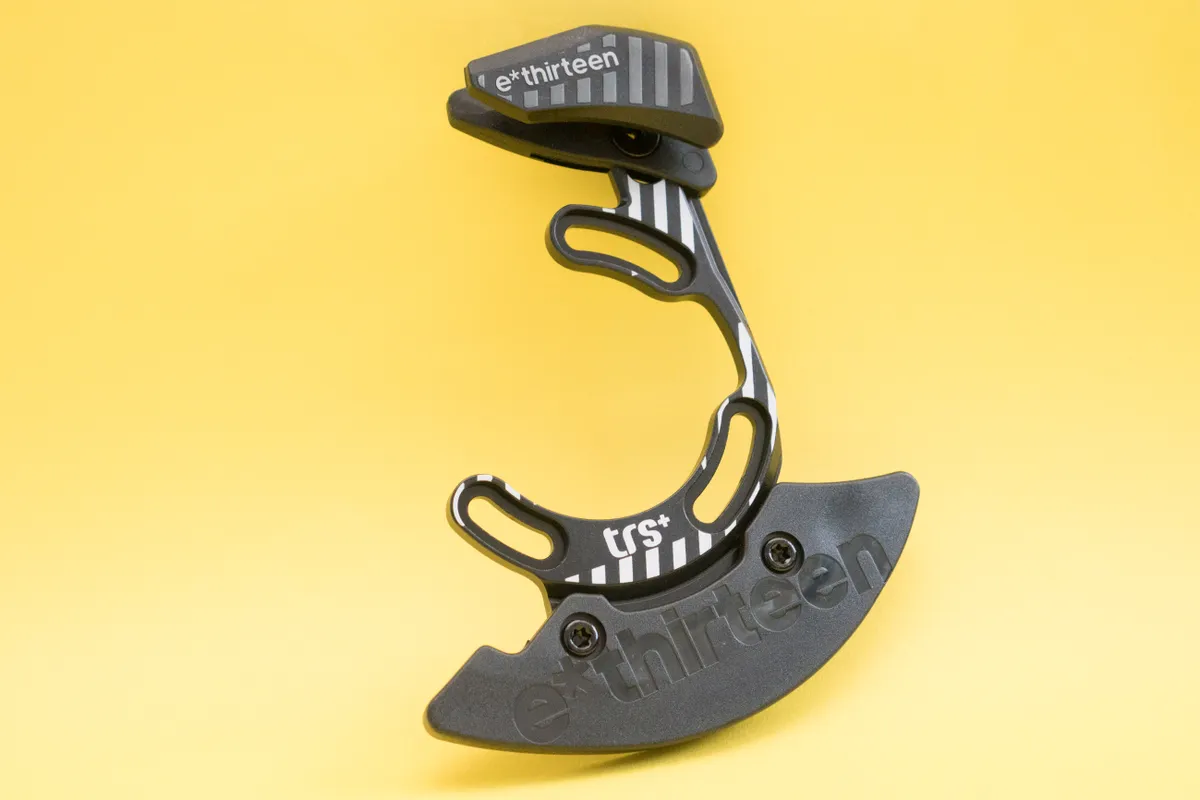Whether you ride trails, gravel or road, no one likes having to pause their ride for a dropped chain.
Luckily, for those riding with a 1x drivetrain, dropped chains are pretty much a thing of the past. Chain guides go the extra mile by keeping your chain firmly in line with your chainring to prevent it from jumping off over rough terrain.
Read on to discover exactly what a chain guide is, how they work and whether you should use one.
What is a chain guide?

It’s important to note here that we’re not talking about a chain catcher (also called a chain keeper), which you might see on a road bike with a 2x crankset.
Chain guides are designed specifically for 1x drivetrains to further improve the system’s chain retention.
Which bikes use chain guides?

Chain guides used to be big, burly bits of kit and were often reserved for use on downhill or freeride bikes. However, as they have become smaller and lighter, it’s now common to see them specced on a wide range of mountain bikes.
Downhill and enduro racers mainly opt for the heavy-duty models, which often include a top and bottom chain guide, as well as a bash guard to protect the chainring from impacts.
Slimmed-down top chain guides, such as the OneUp V2, are commonly seen on trail bikes and downcountry bikes.
While more and more bike manufacturers are now fitting chain guides as standard, they can be retrofitted easily.
With 1x drivetrains becoming popular on gravel bikes and having a resurgence on the road, we are seeing more and more chain guide options popping up for drop-bar riders.
What are the benefits of running a chain guide?

Although modern 1x drivetrains, narrow/wide chainrings and clutch derailleurs already deliver great chain retention, a chain guide adds the extra security to make dropped chains a thing of the past.
As well as improving chain retention, chain guides can also improve shifting performance on rough terrain by keeping the chain in line.
Chain guides with integrated bash guards offer additional benefits by protecting your chainring from rocks, roots and debris on the trail.
Are there any disadvantages to running a chain guide?

While there are no real downsides to running a chain guide, there are a few factors to consider.
The first potential downside of a chain guide is the added weight. However, with most modern chain guides weighing between 30 and 100 grams, this will only be an issue for those looking to save every gram possible.
Depending on the chain guide and frame combination, some riders may experience the chain rubbing slightly on the chain guide in certain gears. While this is often fixed by careful adjustment of the guide, some riders may find the additional complexity off-putting.
Do you need a chain guide for road and gravel riding?

If you ride a road bike or gravel bike with a 1x drivetrain, you may be wondering whether you could also benefit from a chain guide.
While road riders won’t often find themselves tackling rough terrain, uneven road surfaces, bumps and potholes can be enough to cause a bike chain to jump off its chainring.
With the advanced capabilities of modern gravel bikes enabling riders to venture further and further off the beaten track, there’s a strong argument for the improved chain retention offered by chain guides on gravel bikes with 1x drivetrains.
It’s important to consider how regularly you drop your chain. If you frequently have to stop to put your chain back on, or just want extra peace of mind, a chain guide is a very effective upgrade. However, if you’ve never dropped a chain before, it’s up to you whether the extra cost and weight are worth your while.
What to consider when buying a chain guide

Here’s what to look for when buying a chain guide.
Mounting options
There are multiple mounting options for chain guides, so it’s important to consult your frame manufacturer to find out which method fits your bike.
Here are the most common mounting options on the market today.
- ISCG 05: uses three tabs that are welded around the outside of the bottom bracket shell, which enable direct fitment of the chain guide to the frame.
- Direct mount: some frames have a tab that enables a lightweight top chain guide to be fitted directly above the chainring.
- BB mount: the chain guide fits between the frame’s bottom bracket shell and the external bottom bracket cup.
- Seat tube mount: some older frames have clearance for a seat-tube mounted chain guide, however, this is uncommon on modern mountain bikes.
Chain security
Your riding style and terrain will influence what level of chain security you should be choosing.
If you are a downhiller or an enduro rider who suffers from frequent dropped chains, a full top and bottom chain guide with an integrated bash guard will keep your chain wrapped around your chainring on even the roughest trails.
If you're looking for something a little lighter that still offers reliable protection on trail and enduro terrain, a top chain guide with an integrated bash guard fits the bill perfectly.
Those looking for an effective upgrade in chain retention for their trail or downcountry bike, without the weight penalty, will be best served by a lightweight top guide.
Materials
Most chain guides are made from a combination of metal and tough plastic. The frame or mounting surface is often made of metal and the guide itself is plastic.
Some premium models also use carbon to shave a couple of grams, but in reality, the weight savings are minimal.
How to fit a chain guide (in brief)

To fit an ISCG or bottom-bracket mounted chain guide, you will need to remove the cranks from your bike. BB-mounted versions will also require you to remove your driveside BB cup. The tools required for this will vary slightly, depending on the crankset and bottom bracket you are running.
Once the cranks are removed, ISCG-mounted chain guides are bolted onto the ISCG tabs surrounding the bottom bracket shell. You may have to play around with washers to achieve the correct chainline.
Once you're happy with the position and alignment of the guide, the bolts are tightened to the specified torque and the cranks can be reinstalled. All that remains is to feed the chain through the guide.
A similar process applies to BB-mounted chain guides. Here, the chain guide is secured by reinstalling the bottom bracket cup.
Direct-mount and seat-tube mounted top guides are simpler to fit and you may not even have to remove your cranks to install them. They will either bolt straight onto your frame or be attached via a collar around your seat tube.





